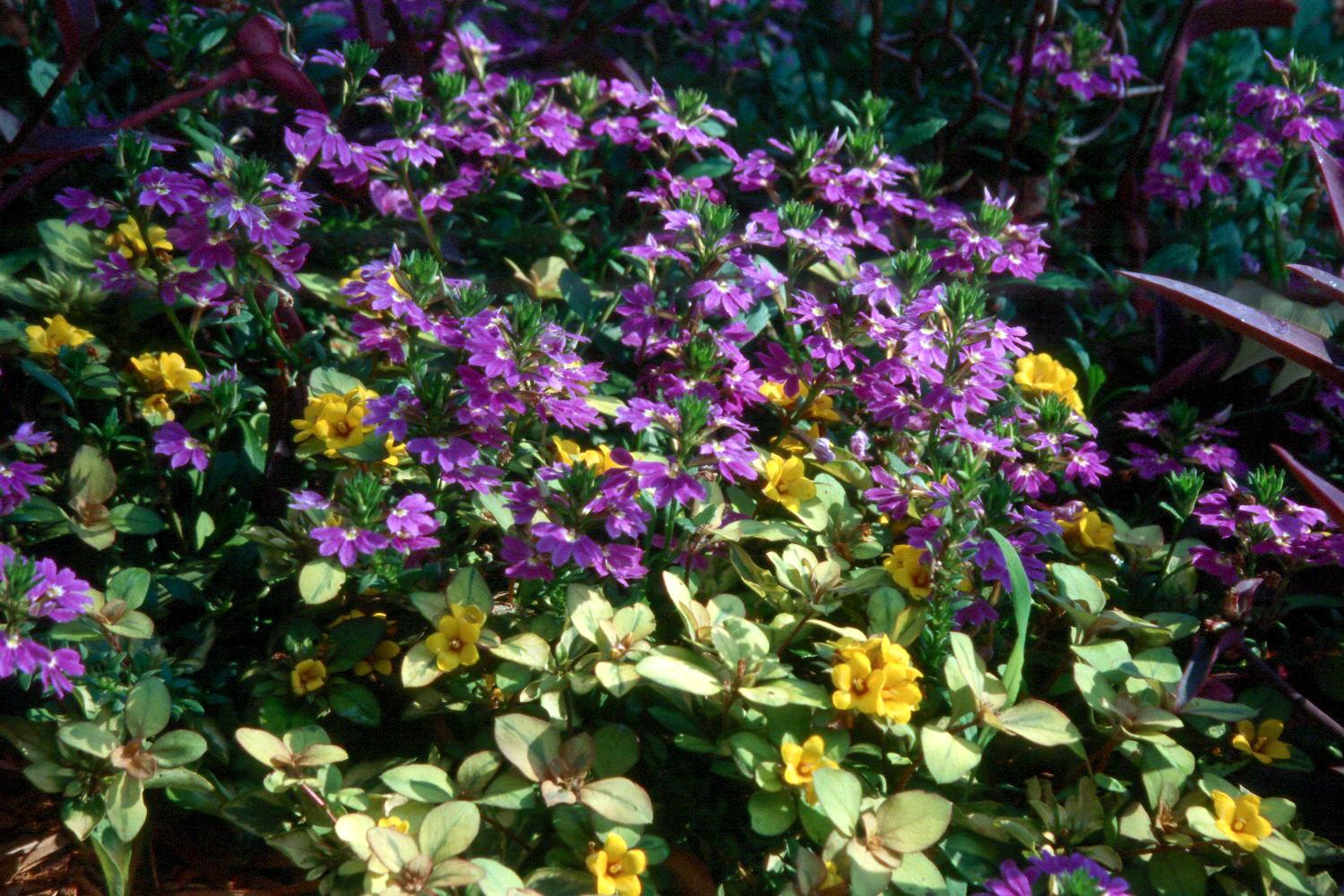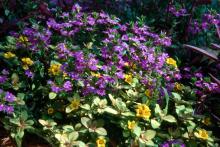Information Possibly Outdated
The information presented on this page was originally released on July 22, 2002. It may not be outdated, but please search our site for more current information. If you plan to quote or reference this information in a publication, please check with the Extension specialist or author before proceeding.
Outback Sunset can gratify gardeners
By Norman Winter
MSU Horticulturist
Central Mississippi Research & Extension Center
The Outback Sunset lysimachia has surpassed my greatest expectations. Although several people predicted problems from Mississippi's afternoon summer sun, I had the perfect location that afforded shade after 2 in the afternoon.
I have had more fun gardening this year than I've had in a long time, and much of the joy came from a small courtyard my wife, Jan, and I have been working on in front of our home. We brought in several hundred pounds of gray slate to make the courtyard and to create pockets for planting.
In one of these pockets, we planted the Outback Sunset lysimachia. The lysimachia has been a much-loved plant, mostly known around here as creeping Jenny, but that is a different species, Lysimachia nummularia. The Outback Sunset is the variegated version of Lysmachia congestiflora, which is a relatively new species from China and not even mentioned in most reference books.
Despite not being in many books, Outback Sunset has skyrocketed in popularity. The common name is Golden Globes. It is an outstanding spreading deciduous ground cover that reaches about 3 to 4 inches tall. It has attractive yellow and green variegated foliage and yellow orange, bell-shaped flowers. The bloom period almost never ceases from spring through summer. It thrives in Mississippi's climate.
By midsummer, the supply is probably nonexistent, so ask your garden center when they will be getting any of the plant. Once you get yours, select a site with morning sun and afternoon shade, and fertile well-drained soil. The drainage will be important to encourage a spring return.
Amend tight, heavy soil with 3 to 4 inches of organic matter and work it shovel deep, 6 to 8 inches. As you probably have gathered by now, I am a proponent of incorporating a little pre-plant, slow-release fertilizer.
When planting the lysimachia or any other perennial or annual, take care of not planting too deeply. Plant where the top of the root-ball is even with the surface of the soil. The Outback Sunset will spread, so space them 12 to 18 inches apart.
Water plants to get them established but then water sparingly. A light application of a slow release, balanced fertilizer a month after transplanting should be sufficient for vigorous growth. Don't be afraid to pinch or prune as needed to keep them within their confines.
Once winter has arrived, we will want to get a little extra mulch for protection. When new growth resumes next spring, give it another shot of fertilizer. Divide in early spring when needed.
In our courtyard planting, we combined it with two other outstanding performers. On the ends it is combine with Purple Heart, or Purple Jew, and in the middle we let it intermingle with New Wonder scaevola, the Mississippi Medallion winner from a few years ago. The planting has been wonderful the entire time.
The Outback Sunset also would look great with gomphrena. An incredibly colorful basket or planter could be made by combining Outback Sunset with petunias like Purple Wave or the new Blue Wave, which is an All-America Selection winner for next year.
I have been touting the Outback Sunset with gold and green variegation in addition to the yellow blossoms, but the first named variety is Eco Dark Satin. It is also very popular and has green foliage and yellow flowers with reddish-brown centers.
Sometimes our landscapes can be overwhelming with everything that needs to be done, which is sort of what happened last year at my new home. This year, we did bite sized, project-by project installation. Take it that way in your landscape, and also try new plants like the Outback Sunset lysimachia.



